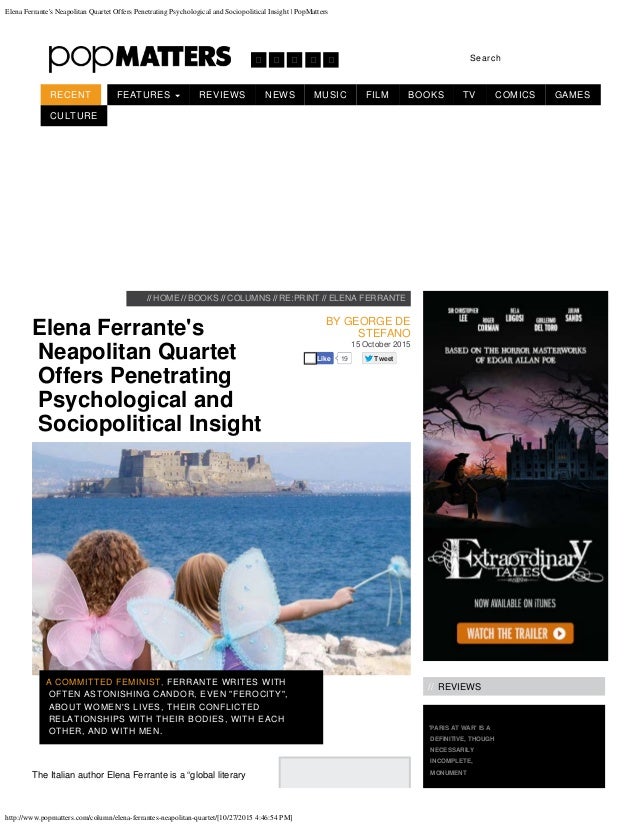

At the same time, Ferrante just spent page after page reminding us that there may be none. We, like Elena, must clarify the ambiguity and ascribe our own meaning. Then, another moment follows, this one ambiguous but laden with meaning. In a series full of moments that feel like punches to the gut, this one may be the most difficult: readers do not, just as the narrator does not, really know what happens to Lila. She sits alone, in her old age, questioning everything that’s happened in her life and everything she thinks she’s known despite having always held the conviction that her work was important. What the narrator initially thinks is her friend’s effort to create a magnum opus, something that would eclipse the work of her own life, may indeed have been only a study in how to disappear how to be forgotten. Even our holy sites and places of learning are built atop the garbage, feces, and blood of those who were, in their own time, convinced they’d left indelible marks upon the earth. It begins as a quiet rumble towards the end of My Brilliant Friend, builds throughout The Story of A New Name and Those Who Leave and Those Who Stay, then fills The Story of The Lost Child with an inescapable roar. Increasingly, however, another theme emerges.

The novels deal with many themes, chief among them female friendship, the relationship between our places of origin and the people we become, and the tenuous bonds that give life its periods of equilibrium. With the release of the fourth and final Neapolitan novel, readers who’ve been following Lena and Lila for hundreds of pages are finally offered a sense of closure.


 0 kommentar(er)
0 kommentar(er)
